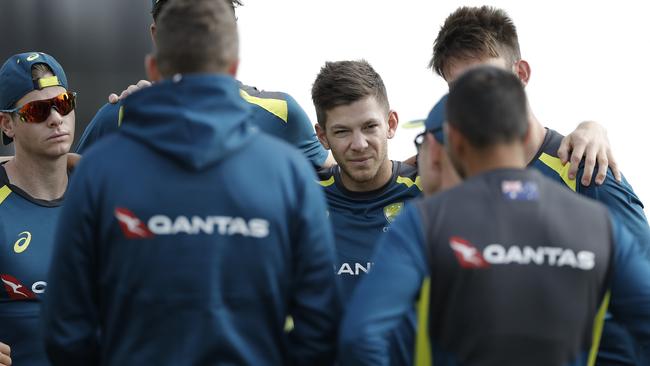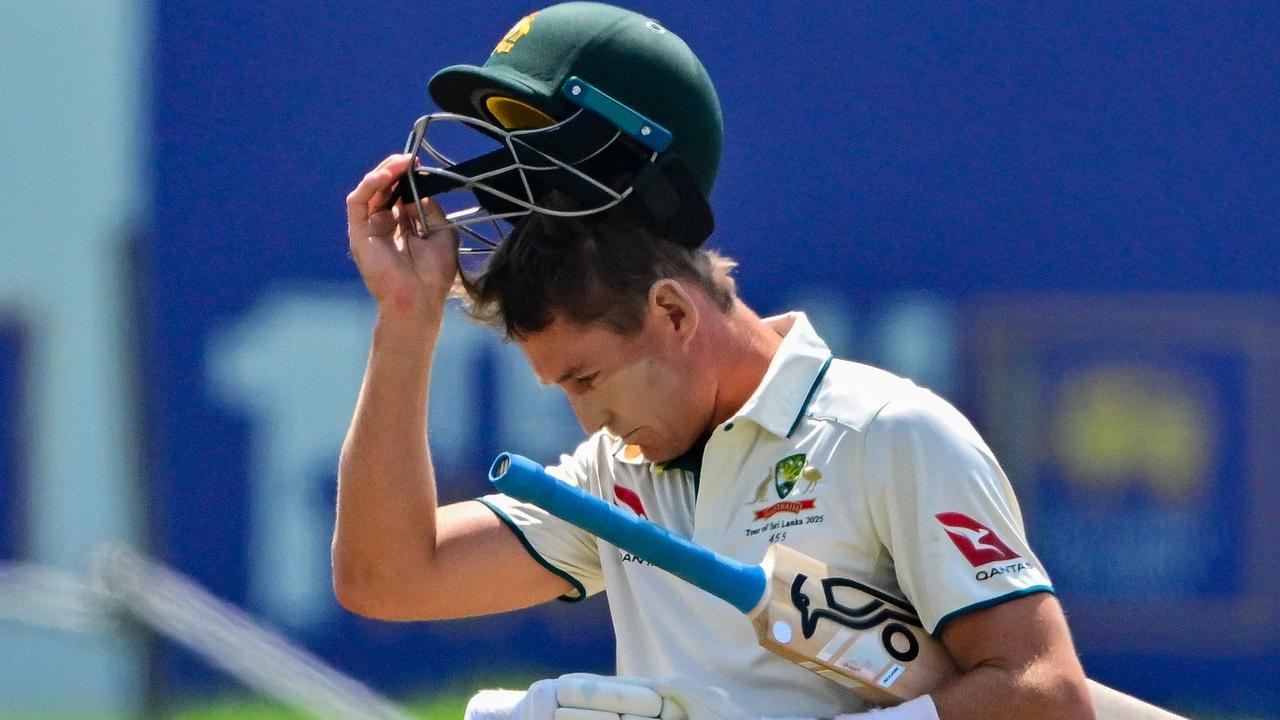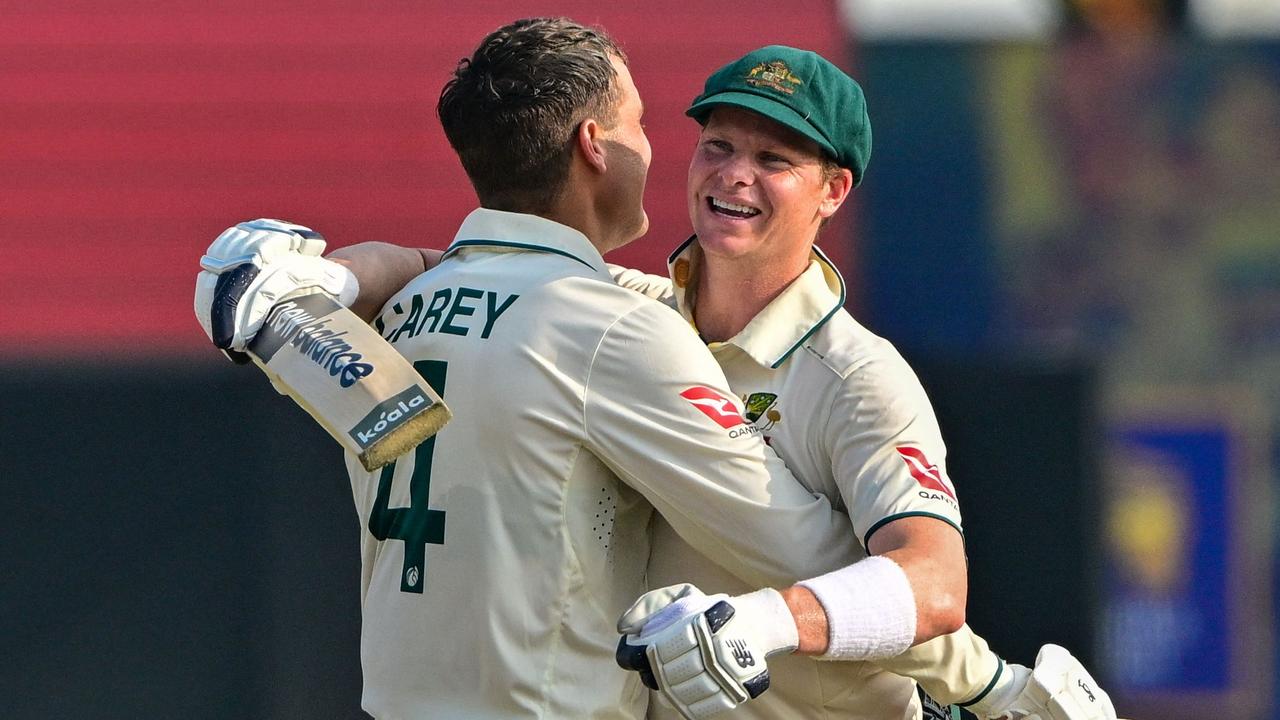Steve Smith to captain Australia again? But what of David Warner?
In April 2020, Steve Smith becomes eligible to lead Australia again. Will he? Should he? Could he?

Nine months to go, and the pause will be a pregnant one. In April 2020, Steve Smith becomes eligible to lead Australia again. Will he? Should he? Could he?
There is nothing like a Test match defeat for setting hares running. Had Nathan Lyon successfully gathered Pat Cummins’s return at the bowler’s end last Sunday, the week would have been spent exalting Tim Paine to the heavens. Instead discussion has turned to his successor, even though the Australians will still retain the Ashes by victories in either of the next two Tests.
But OK, let’s consider Smith — because, hell, we haven’t done that nearly enough this summer. One way to start is to consider the very remarkable, and rather ramshackle, circumstances of his original commission.
Five years ago Australia were led in the UAE by Michael Clarke, with Brad Haddin as the appointed deputy, and Chris Rogers the proxy in the absence of both. In some eyes, Smith had barely established himself in the Test team. It was barely a year since his maiden Test century, after a three-year search.
The 2014-15 season then began in chaos. There was a reverberating defeat by Pakistan. There was the froideur between Clarke and the selectors over his injury problems. And, above all, there was the heartbreak of Phillip Hughes’s death, which has ramified through Australian cricket in ways we are still coming to terms with.
When Clarke aggravated his injuries in the delayed Adelaide Test against India, there was an informal conference in the bar of the Playford Hotel on North Terrace. Thirty-seven-year-old Haddin was now first among equals, but told Cricket Australia director Mark Taylor he wished not to be considered as a candidate for the captaincy; the natural heir, he said, was 25-year-old Smith, with “more playing years ahead”.
At Jolimont, this struck a chord. Smith became first locum then full-time captain. And this decade at least, the appointment of a skipper has become not just about getting someone to represent you at the toss and move fine leg a bit squarer, but an opportunity for a form of corporate rebranding.
By replacing the plucky but pedestrian Ross Taylor with Baz McCullum, for example, New Zealand took a step out of steady-as-she-goes, and aimed for the top — a promise which, by making two World Cup finals since, they have very nearly fulfilled.
When West Indies appointed Jason Holder, it was an admission that turning the team around would be a lengthy process requiring a completely fresh face. When Pakistan appointed Misbah ul-Haq, it was in quest of the stabilising ballast of experience. Virat Kohli? An exquisite work of alignment this, basically rechristening Team India as Team Kohli.
What was the Smith brand? Clarke, highly strung, had been at times brittle and combative in his relations with officialdom. Smith had different associations: his brand was youthful, wholesome, open; it offered a symbolic moving on from recent traumas; it was also plastic, in that it could be shaped and moulded by the strong wills in the vicinity.
In this sense, it was believed a better bet than another powerful brand. In the years 2014 and 2015, David Warner made nearly 2500 Test runs at an average of almost 60 and a strike rate of over 80 including 10 hundreds. He had the attributes of a fine captain, including an outstanding cricket intelligence and an easy personal charisma. He was also two years Smith’s senior. But he had no lobby; rather he had a rap sheet, and also a reputation for abrasiveness, with which CA were perfectly comfortable in other ways, but not as captain.
Looking back, then, captain Smith was a good fit for an organisation increasingly image-conscious and bureaucratically top-heavy. Warner could be accommodated as deputy, to keep him quiet — or, more exactly, to keep him noisy.
It was assumed that whatever risks were involved in choosing a captain so callow with a personality so little formed, and a vice-captain so capable and ambitious, could be mitigated by the surrounding structures — an assumption reminiscent of Eliot’s line in Choruses from the Rock about men “dreaming of systems so perfect that no one will need to be good”. But they do, of course, as eventually was learned in Cape Town.
So to the new arguments for Smith. We are told he has learned. We are told he has matured. We are told he now knows cricket is a game, and that he counselled Nathan Lyon accordingly this week, sending the disconsolate spinner a message to this effect. Once he would have told him, of course, but everything gets done by phone nowadays, even bonding.
Of course, one would have been surprised by the opposite — that Smith was unchanged by the experience, not more grown up for being 30, for being married, a bit better travelled, and a bit less cricket-centred. These can only be good things.
But what has the system learned from its misadventures, about the way it grooms, chooses, develops, cares for and protects those it promotes to leadership positions? It’s not up to Smith alone to prove his worthiness; the system must also demonstrate that it deserves people’s best efforts.
Let us say, for argument’s sake, that the system has moved on, has been tempered and toughened by past experience, enhanced and enriched by new philosophies. That would lead us to think, then, that Smith was a good chance of operating more effectively and happily than before. Good-o.
But if that’s true, then is it not also true of Warner? Warner was every bit as much a creature of the system’s priorities as Smith. He was, arguably, even more cynically used. Yet his punishment included a permanent disbarment from any leadership position in Australian cricket. Is this proportionate? Abiding gaps in knowledge about Cape Town make this difficult to judge.
So by all means, let’s entertain the prospect of a new Smith ascendancy. But I’m not sure that Warner should not be part of the same conversation.


